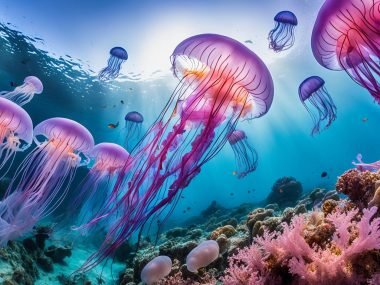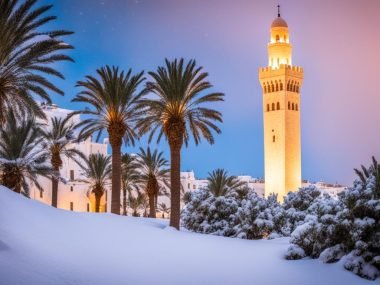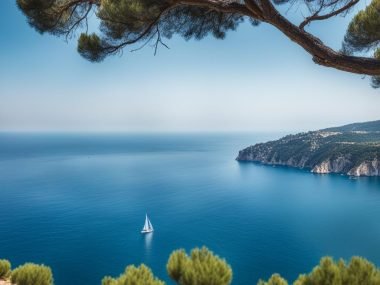Did you know Tunisia is close to Italy but there’s much debate about its place? It’s in North Africa, making it Africa’s topmost country. It is also a big part of the Maghreb region. This makes people talk a lot about if Tunisia is in the Middle East.
Tunisia is next to the sea and near countries like Italy and France. It has a rich past with stories from Ancient Carthage and the Romans. There were also Arab conquests and French rule. All these influences make it hard to say if Tunisia really fits into the Middle East.
Today, Tunisia’s mix of cultures and history is very rich. But, people still argue if it should be seen as part of the Middle East. The problem is, everyone has a different idea of what the Middle East is. This makes learning about Tunisia’s place in the world both interesting and complex.
Key Takeaways
- Tunisia is the northernmost country in Africa and part of the Maghreb region.
- Its strategic location adjacent to the Mediterranean Sea influences its regional identity.
- Tunisia has a rich history from Ancient Carthage, Roman periods, Arab conquests, to French colonialism.
- Debates about Tunisia’s classification as part of the Middle East stem from varying definitions of the region.
- The country’s cultural and historical amalgamation complicates its regional affiliation.
Geographical Location of Tunisia
Tunisia is a fascinating nation in North Africa. It is special in the Maghreb area. Its location shows why it’s important.
Tunisia’s Coordinates and Neighbouring Countries
Tunisia lies at 34°N 9°E. This spot is central, next to key neighbours. Algeria is to the west and southwest, Libya to the southeast. It also has a big coastline along the north and east by the Mediterranean Sea.
Tunisia is close to Italy, especially near Sicily and Sardinia. It’s near Malta to the east too. These facts show Tunisia’s key spot in the area.
Introduction to the Maghreb Region
Tunisia is part of the Maghreb region. It shares history and culture with countries like Algeria and Libya. The Maghreb has nations like Morocco and Mauritania too. They all share a common heritage.
Being between Africa and Europe makes Tunisia part of the Maghreb. The Mediterranean Sea links Tunisia with different cultures. This makes its place in the Maghreb special.
Knowing its location and neighbours helps us see Tunisia’s role in the Maghreb. This shows how important it is, both regionally and globally.
| Parameter | Details |
|---|---|
| Location | North Africa |
| Coordinates | 34°N 9°E |
| Neighbours | Algeria, Libya |
| Proximal Countries | Italy, Malta |
| Region | Maghreb |
| Coastline | Mediterranean Sea |
Historical Background of Tunisia
The history of Tunisia is rich and colourful. It has been shaped by many different civilisations. These include cultures from across the world.
Ancient Carthage and Roman Influence
Ancient Carthage was set up by the Phoenicians. It grew into a big trade empire in the Mediterranean. This was due to its good position and trade links.
But, it was defeated by Rome in the Punic Wars. After that, Tunisia became an important place under Rome. It was known for its farms and cities.
Arab Muslim Conquest and Subsequent Civilisations
In the 7th century, Arabs came to Tunisia. This changed the country’s culture and religion a lot. The people of Tunisia began following Islam and Arab ways.
Since then, many rulers have ruled Tunisia. This includes Berber and Ottoman empires. Each of them added something special to Tunisia’s history and culture.
French Protectorate and Independence
In the late 1800s, the French came to Tunisia. They brought European styles and made new roads. But, they also faced a lot of resistance.
The people of Tunisia fought for their freedom. They finally became independent in 1956. Today, Tunisia is a mix of its long history and new hopes for the future.
Culture and Demographics
Delving into Tunisia’s culture shows a lively mix of languages and religions. With a mainly Arab-Berber people, Tunisia is a place with its own culture.
Linguistic Diversity in Tunisia
Tunisia is a place with many languages. Modern Standard Arabic is the official one. But, Tunisian Arabic is what most people speak every day. French is also key for work, showing Tunisia’s history and links with French-speaking countries.
Religious Composition
In Tunisia, most people follow Sunni Islam. Yet, there are small groups of Jews and others. This mix makes Tunisia’s culture open and rich, showing its complex identity.
Political and Economic Relations
Tunisia is now a big part of the international community. It works hard to build diplomacy and grow economic ties around the world. The country shows its commitment by being active globally.
Tunisia’s Integration into the International Community
Over time, Tunisia has become a key player in the world. It uses modern diplomacy and forms strong alliances. Being part of groups like the United Nations and the African Union helps Tunisia. It makes the country’s diplomatic reach bigger and strengthens its economy.
Tunisia’s Relations with European Countries
Tunisia and Europe have strong political relations and economic connections. This is due to their shared history and being close by. France and Italy are key partners, thanks to their past and ongoing projects.
Working closely with the European Union boosts trade and political ties. This cooperation is very important for Tunisia.
By aligning with Europe, Tunisia boosts its economy and helps regional stability. These efforts show how Tunisia uses diplomacy to improve its place in the international community.
Defining the Middle East
The Middle East is a term that means different things to different people. It is a region with a lot of history and culture. But, it doesn’t have clear boundaries that everyone agrees on. In this section, we’ll look at how people have defined the Middle East in various situations.
Various Definitions and Interpretations
When we talk about the Middle East, we see it through many lenses. Some say it includes countries in Western Asia and parts of North Africa. Others think it’s about countries with the same cultural and religious backgrounds. This shows how rich and diverse the region’s history is.
Who you ask changes the answer. Some include only Western Asian countries. Others add Northern African countries too. This shows there are many ways to see the Middle East’s borders.
Geopolitical Usage of the Term
In politics and economics, the Middle East is very important. The countries there are known for their alliances and resources. This view shows why the Middle East matters on the world stage. It also shows how countries within this region connect with others globally.
The way we define the Middle East can change with world events. Alliances and conflicts play a big part in this. So, understanding what the Middle East means is complex but also interesting.

Getting what the Middle East is about means looking at its borders, how people see it, and its role in world politics. When we do this, we understand better why defining the Middle East is complex and always talked about.
North Africa and Its Ties to the Middle East
Tunisia, and other North African countries, are closely linked to the Middle East. They share religions, languages, and traditions. These ties create a combined heritage that has lasted for centuries. Arab culture and local customs mix, making something unique in North Africa.
Cultural and Historical Connections
North Africa and the Middle East share a lot when it comes to culture. Islam brought them closer, sharing beliefs and practices. Arabic is a key language here. It helps people from both places understand each other better. They exchange art and ideas which strengthens their bond.
Political Alliances and Economic Co-operations
North African nations and the Middle East work together politically. This helps keep the region stable and helps it grow. They make deals to help their economies and security. Working together like this makes them stronger when facing world challenges.
Is Tunisia Part Of The Middle East?
The Tunisia Middle East debate draws lots of interest. It asks if Tunisia is more North African or Middle Eastern. Some think Tunisia’s location and culture place it in the Middle East. But, others point to unique history and politics saying it’s not.
Arguments Supporting Tunisia as Part of the Middle East
Some say Tunisia belongs to the Middle East. They talk about its closeness to countries like Egypt. They also say Tunisia’s traditions and religion are much like those in other Middle Eastern places. This suggests Tunisia could be included with them.
- Geographic proximity: Tunisia is near Egypt and Libya, bringing it closer to the Middle East.
- Cultural ties: It shares many cultural aspects with Middle Eastern countries.
Counterarguments and Exclusion from Middle East
However, some say Tunisia should not be seen as Middle Eastern. They say Tunisia’s North African roots and varied history make it different. Its past connections with Europe and Africa make it distinct. Plus, Tunisia is part of the Maghreb region, setting it apart.
- North African heritage: Tunisia’s background shows its strong North African connections.
- Distinct historical trajectory: European and African influences have shaped Tunisia differently from Middle Eastern countries.
United Nations and Other International Organisations’ Definitions
The United Nations and other groups have a big say on how we see Tunisia. They often put Tunisia in different groups based on where it is and other factors. This affects how people see its place in the world.
World Bank’s Classification
The World Bank says Tunisia is in the Middle East and North Africa, or MENA. This shows it shares many challenges and goals with other countries there. Being in the MENA group helps people compare it with nearby countries on money and development.

IMF and UNICEF Definitions
The International Monetary Fund, or IMF, also puts Tunisia in the MENA region. This helps look at Tunisia’s money matters and how it manages its economy with other countries in the area. It gives us a way to understand its financial choices.
UNICEF also considers Tunisia as part of MENA. This is important for looking at child health and education there. By grouping Tunisia with others, UNICEF can plan better help for the kids there.
To wrap up, the way these groups classify Tunisia shows us different sides of where it stands regionally. It points out both how Tunisia is alike and different from its neighbours.
Tunisia’s Role in the Arab World
Tunisia plays a big part in the Arab world. It works closely with other nations in the Arab League. This shows how dedicated Tunisia is to its region.
Membership in the Arab League
Tunisia is proud to be in the Arab League for a long time. It helps in many ways to bring Arab countries together. Tunisia works hard to solve problems and improve things for everyone.
Contributions to Arab Culture and Politics
Tunisia’s culture has touched many people across the Arab world. Its history and arts show how it helps shape Arab identity. It also pushes for changes to make politics better and fairer.
By doing these things, Tunisia helps keep the Arab community strong. It respects its North African roots while connecting different cultures. Tunisia is like a bridge linking many together in the Arab world.
Media and Academic Perspectives
It’s important to see how Tunisia shows up in Western media and academic talks. How it’s shown and talked about shapes our view of Tunisia. It sits between North Africa and the Middle East.
Coverage in Western Media
Western media often talks about Tunisia’s history, politics, and culture. Big names like the BBC and The Guardian share news on Tunisia. They talk about changes since the Arab Spring, and moves towards democracy and economic health. Tunisia is shown as a mix of North African and Middle Eastern vibes, interesting for the world.
Academic Debates and Studies
Research and academic discussions dig into Tunisia’s identity. They look at its history, politics, and cultural connections to North Africa and the Middle East. Journals like The Middle East Journal and African Affairs share these studies. They help us fully understand Tunisia’s place in the world.
Together, media and academic discussions help shape how the world sees Tunisia. They show Tunisia’s special place between North Africa and the Middle East. This gives us a full picture of its role in the world story.







